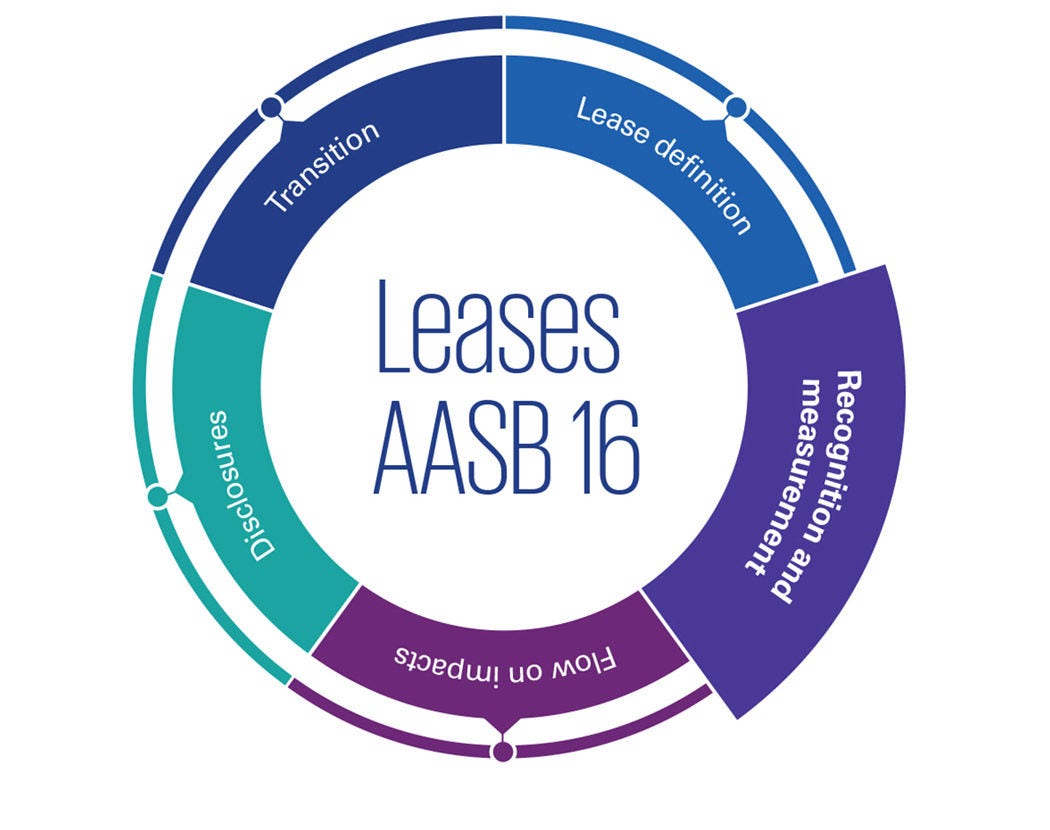A lease of property often includes payment for the right to use the property plus other amounts such as reimbursement of maintenance, rates and other costs, otherwise known as 'outgoings'. This issue of AASB 16 Check responds to the common questions we are hearing from lessees on how payments for outgoings are treated under AASB 16 Leases.

Scenario
Let’s pose a scenario that Company Y enters into a lease of an office building for 5 years. It pays a fixed amount of $20,000 per month for the right to use the building. The amount also includes maintenance and waste disposal services, water usage, and a reimbursement for insurance premiums and property taxes paid by the landlord*. Company Y chooses to capitalise only payments for the right to use the building**.
Interpretive response: No, Company Y allocates the fixed amount to the different types of benefits it receives from the landlord.
The Company has a lease, that is, it receives a right to use the building (lease component). It also receives:
- maintenance and waste disposal services (non-lease component); and
- a service for water usage (non-lease component).
The Company does not receive a benefit from the insurance premiums and property taxes. Accordingly, Company Y should split the monthly payments between lease payments (to be included in the lease liability) and an expense for the non-lease component services received.
Interpretive response: Company Y allocates the total payments of $20,000 per month between the benefits it receives (lease and non-lease components) from the landlord.
The allocation between the lease and services is based on their respective standalone selling prices as illustrated below:
| Component | Stand-alone prices | Selling price ratio | Allocation of consideration |
| Building lease | $22,000 | 88% | $17,600 [1] |
| Maintenance, waste disposal and water *** | $3,000 | 12% | $2,400 [2] |
| Total | $25,000 | $20,000 |
[1] ($25,000 x 88 percent)
[2] ($25,000 x 12 percent)
The company includes $17,600 in its lease liability, and $2,400 is recognised as an operating expense in the month that is incurred.
In technical speak
* This is based on the assumption that the property owner is obligated to pay the property taxes. If the occupier (lessee) has the statutory obligation to pay the property tax, then that tax is accounted for under interpretation 21 Levies.
** When an arrangement contains lease and service components, a lessee has a choice to either:
- Combine the lease and service components and account for them together as a lease; or
- Separately account for the lease and service components.
This choice is made by class of underlying asset.
*** Allocation of the consideration in the contract is on the basis of the relative stand-alone price of the lease component and the aggregate stand-alone price of the non-lease components.
If you would like to discuss the implementation of the standard for your organisation, please contact us.
More AASB 16 Check
- How does a borrower account for a waiver of loan repayments?
- How does a borrower account for loan repayment holidays obtained during the COVID-19 pandemic?
- When do loan modifications result in derecognition?
- How does a borrower account for a modification to a prepayable fixed rate loan?
- What is the impact of modifying a floating rate loan?
- How do new costs and fees impact modification accounting?
- Does the effective interest rate change with non-substantial loan modifications?
- How does a borrower account for loan renegotiation costs?
- How are unamortised transaction costs accounted for on loan modification?
Subscribe for updates
Register to receive our weekly Financial Reporting News update.





